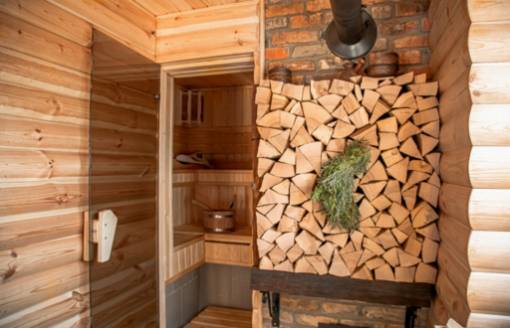Are you experiencing excessive smoke emission in your wood-burning sauna? It can be frustrating and even potentially harmful to your health. In this article, we will discuss the different factors that contribute to sauna smoke production and provide practical tips on how to manage and reduce smoke emission in your sauna. From choosing the right type of wood to incorporating smoke-reducing accessories, we've got you covered. Let's get started on creating a more enjoyable and healthier sauna experience.

Choosing the Right Type of Wood for Reduced Smoke Emission
When it comes to reducing excessive smoke emission in your wood-burning sauna, choosing the right type of wood is crucial. Certain types of wood are more prone to producing excess smoke, which can be not only unpleasant but also harmful to your health. By selecting the proper type of wood, you can significantly reduce smoke emission and create a more enjoyable sauna experience for yourself and your guests.
Hardwoods such as birch, oak, and maple are ideal choices for a wood-burning sauna as they produce less smoke compared to softer woods like pine or fir. These hardwoods burn more efficiently and evenly, resulting in reduced smoke production. Additionally, hardwoods tend to have a higher heat output, allowing you to reach and maintain the desired temperature in your sauna without excessive smoke.
It is important to avoid using wood that is wet or treated with chemicals, as these can also contribute to increased smoke emission. Make sure to properly season and dry your wood before using it in your sauna to ensure optimal burning conditions and minimal smoke production.
By carefully selecting the right type of wood for your wood-burning sauna, you can effectively manage and reduce excessive smoke emission, creating a healthier and more enjoyable sauna experience.
Regular Maintenance Tips to Prevent Excessive Smoke in Wood-Burning Saunas
Regular maintenance is crucial in preventing excessive smoke in wood-burning saunas. One important maintenance tip is to regularly clean the chimney and vents to ensure proper ventilation and airflow. Additionally, it is important to regularly clean the ashes and soot from the sauna stove to prevent them from building up and causing excessive smoke. Keeping the stove door seals and gaskets in good condition is also important in preventing smoke leakage. Regularly inspecting and maintaining the stove and sauna components will help ensure efficient and smoke-free operation.
Understanding the Impact of Moisture Levels on Sauna Smoke Production
When wood with high moisture levels is burned, it produces more smoke compared to dry wood. This is because the energy from the burning process is used to evaporate the excess water in the wood, leading to incomplete combustion and increased smoke production.
To reduce smoke emission in your wood-burning sauna, it is essential to ensure that the wood you use is properly seasoned and has a low moisture content. Seasoned wood has had time to dry out, typically for at least six months to a year, which reduces its moisture content and ensures more efficient combustion. By using well-seasoned wood with low moisture levels, you can significantly decrease smoke production and create a more enjoyable sauna experience.
Incorporating Smoke-Reducing Accessories in Your Wood-Burning Sauna
There are various accessories available on the market that are specifically designed to help minimize smoke production and create a more enjoyable sauna experience.
One popular accessory is a smoke reducer, which is designed to help improve air circulation within the sauna and reduce the buildup of smoke. These devices are typically placed near the sauna stove or heater and work by pulling smoke and air out of the sauna and venting it outside. By incorporating a smoke reducer, you can effectively minimize the amount of smoke that is released into the sauna, making it a more pleasant environment for relaxation and rejuvenation.
Additionally, using a chimney cap can also help to reduce smoke emission in your wood-burning sauna. Chimney caps are designed to prevent downdrafts and backdrafts, which can lead to an increase in smoke production. By installing a chimney cap on your sauna stove or heater, you can help to create a more stable airflow and minimize the occurrence of smoke buildup.
Another accessory that can help to reduce smoke emission in your wood-burning sauna is a sauna door vent. These vents are typically installed on the sauna door and work by allowing fresh air to enter the sauna while simultaneously venting out smoke and other pollutants. By incorporating a sauna door vent, you can help to improve air circulation within the sauna, resulting in a reduction in smoke production.
Overall, incorporating smoke-reducing accessories in your wood-burning sauna can help to create a more enjoyable and comfortable sauna experience. By investing in the right accessories, you can effectively manage and reduce excessive smoke emission, allowing you to fully enjoy the benefits of sauna bathing in a clean and healthy environment.
